My friend from Beijing, L, recently took on a job to be an editor for a tea magazine that Zhongcha puts out, and he asked me to try to write a column for him. It’s going to be in English and Chinese (the column, not the rest of the magazine) and I thought I should give it a shot in English first before writing the Chinese equivalent. The below is my first attempt — please give any thoughts or comments you might have so that it may get a little better. Thanks 🙂
There are only two ingredients in a cup of tea – the leaves, and the water. The leaves we talk about very often. In fact, I would say the leaves are almost the only thing we tea lovers normally talk about. Water, however, is a much neglected subject, and for water, the preparation is usually the least discussed. Yet, over the years, I have found that the preparation of water and the water used for the tea is extremely important to a cup of tea. This is obvious among those of us who already drink tea often, but it is difficult to say something conclusive about water. While I certainly do not pretend to know anything more than my readers here, I do feel that it might be useful to engage in a discussion of the sort of variables involved in water that seem to affect the making of tea.
The first question about a type of water that we can easily know about is the source. Where is the water from? There are a number of old texts that deal with this question. Lu Yu from the Tang dynasty said that the best water is spring water, then river water, and the worst are well water. Other, later texts generally find that to be true, although there are smaller variations in their beliefs. I don’t think it is necessary to discuss which spring is the best, because that is partly subjective, and it is also rather difficult to pinpoint such things when most of these springs are not reachable by us. However, we do now have the ability to gather water from a source and ship it many, many miles away. So in some ways, we do have such access.
I think the primary differentiator between the different waters that we can usually access is the amount of minerals in each of them. Every water has a unique mineral profile, and in many cases, we can compare them easily as the bottlers who make the water provide these information to us. Without getting too technical into the chemistry, generally speaking I find the ppm of a water a reasonable indicator of what kind of tea it brews, but most of the time water contains mostly Calcium Carbonate (plus whatever other minerals there are). On the low end, I’ve seen water with as low as 10 ppm. This was, I believe, a water from a small island on the south side of Japan that supposedly had pristine conditions. On the hard side, you have famous waters like Evian, or even the new water from Tibet, that have hundreds of ppm of minerals in the water.
So what does it do for your tea when you brew teas with different hardness? I have done a test before using two different types of water and brewed them in an exact same way, using the same equipment. The tea used was a Yunnan black tea. This picture is the result
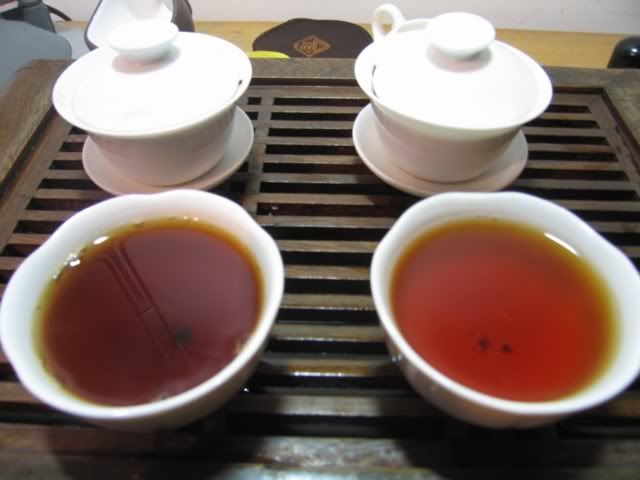
The water I used for the tea on the left is the new 5100 water from Tibet, with anywhere from 482 to 725ppm of dissolved solids in the water. On the right hand is the Nestle water from Shanghai, which I believe is a public source water that is treated. They don’t provide a specific amount of dissolved solids, but I believe it is quite low.
If you’re not convinced of the fact that this was a product of the water, and not of other variables, such as the amount of leaves used or the time the water spent in the tea, I brewed the next infusion by switching the waters around.
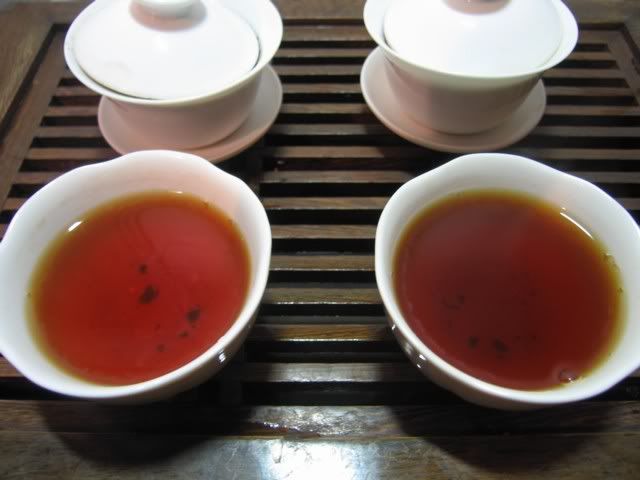
I think this shows that the effect of the color of the tea is mostly a product of the water difference, and not anything else.
The taste of the teas were also different with the two waters. The cup of tea made with 5100 is softer, rounder, fuller, with a heavier taste and seems to have some more depth. The tea made with the Nestle water, on the other hand, is a cleaner tasting cup, with higher notes and less of the body and depth. Yet one might say the tea taste crisper, and some may prefer this type of taste. I do, however, think that with more minerals there does seem to be an ability by the water to pull out more flavor from the tea.
When I was in Beijing for a year doing research, one of the things that always was a problem was the water used at the tea shops. Some shops use very good water that make the tea taste good, but some use very bad water that are basically filtered or even distilled water. That can make a tea taste very flat or boring sometimes, and so when I buy tea, I often will first buy a little bit to take home with me to first taste it at home, using water that I am familiar with, before I buy more. Unfortunately, for teas that seem bad at the shop, sometimes it is possible to miss a very good tea because the water they used was bad.
There was one instance when I remember such a thing happening, although in that case, it was a tea I brought to somebody’s shop, this time in Hong Kong. I had a tea with me, a Yiwu, that I thought was very good. I took it with me to the shop and we made it, and instead, the tea came out very flat. There was a very low level of aroma, and the body of the tea was also thin. It was not active in the mouth, and was barely showing any sign of strength. I was mystified, because the tea was certainly much better than what I was tasting in that cup.
Then I realized that they use a very advanced filter system for their water. The water filtration system is so good, in fact, that probably very little minerals were left in the water at all. If my theory that higher mineral content tend to “pull†more flavinoids out of the tea, then a very low content would mean a flavorless tea, which was true in this case. I walked outside to the closest convenience store, and bought myself a bottle of Volvic, a French mineral water. I took it back with me to the shop and we continued brewing this tea with the Volvic, and instantly, the taste improved dramatically. The tea now had a throatiness and a depth that was lacking before, and it tasted much more like the tea that I know. The shop girl, who is a good friend of mine, was surprised to find it so different.
What the above story illustrates is that water can sometimes be “too goodâ€. Just because it is filtered for a million different things does not mean that it will make good tea. I believe that a good water requires a certain minimal level of minerals in it. There are some ways of fixing this problem. One is to use stones that can be placed in a kettle or a water container and which helps put some minerals back into the water. Another is to buy some mineral salts and add them to your water.
So what water is good with what tea? I can’t say for sure, for, again, it is a matter of taste, but I do feel that there are some general rules that might apply a little more universally. I think for teas that are delicate and light, which includes most green teas and white teas, as well as some lightly fermented oolongs, the water used should probably not be too heavy in mineral content. Using a crisp water would accentuate the freshness of the taste of the tea, and often will even make the tea feel cool to the mouth, which is sort of what you want anyway from a green. Using water that is too heavy for such a style would create a tea that seems unbalanced.
On the other hand, I think heavier teas, including blacks, darker oolongs, and puerh (and I put even young raw puerh in this category) water that has a bit more minerals in it would be beneficial.
In these cases, there is usually a depth of flavor and a complexity that is being sought after, as well as potentially a good solid body in the liquor itself, and even down to a deep, rich color for the eyes. Both of the teas that I tested for this purpose that I mentioned above benefitted from the heavier water.
The key here is that I believe there is no single water that works for all kinds of tea. Water that is good for green tea is probably not going to be good for black tea, and vice versa. Again, what “good†means really depends on the individual, and some people may just like the lightness that comes with a black tea brewed with a crisp water. But I think as a general rule of thumb, we need to adjust our water as we change the tea being made.
How to pick water that is available is obviously a matter of great concern. One is simply through trial and error. Try widely, and eventually you will find one that works for the tea in question. Everybody has their favourite teas, and in those cases, maybe a little more experimentation would be useful. Since each person’s favourite tea is probably also the one that he or she knows the best, it also makes experimentation more fruitful, as any change in taste due to the water tasting different would be more obvious.
More importantly though, I think tasting water on its own, without the tea, also helps develop a sensitivity in understanding the water’s characteristics. Whenever I am traveling I will always go to the local convenience store and buy bottled water that I have never tried before. Tasting them, sometimes side by side or one after another, can tell me a lot about the way different waters taste and the range of possibilities that exist. Doing a blind taste test at home, with maybe three, four, or five different kinds of water in identical glasses for taste, is also one good (and I should add, fun) way of getting a better sense of how different waters taste. When doing this, it might be useful to include the normal water that one uses for brewing tea, which in our case is most likely filtered tap water. Doing so will help locate exactly where on the spectrum the tap water is.
I have yet to do this yet, but I think at some point it might even be useful to try water cocktails – mixing different waters together to get something else out of them. I don’t know if it is something worth trying, but it’s definitely a thought. After all, teas are regularly mixed to maintain consistency from batch to batch. I don’t see why water can’t be mixed that way.
This is just the water itself. We haven’t even mentioned the preparation of water for brewing, but that is another topic entirely, and should probably be discussed on its own.



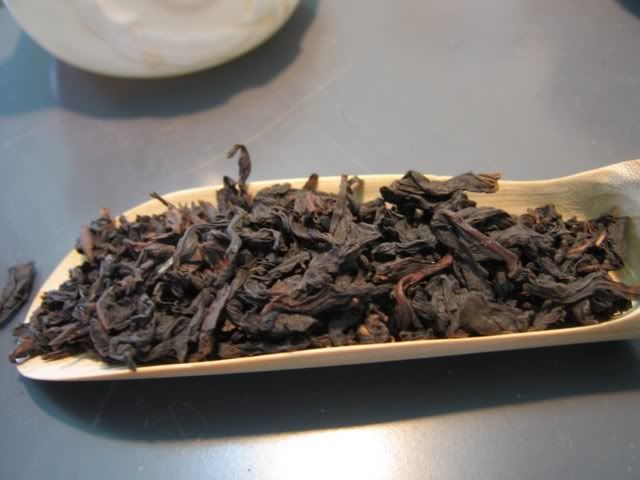
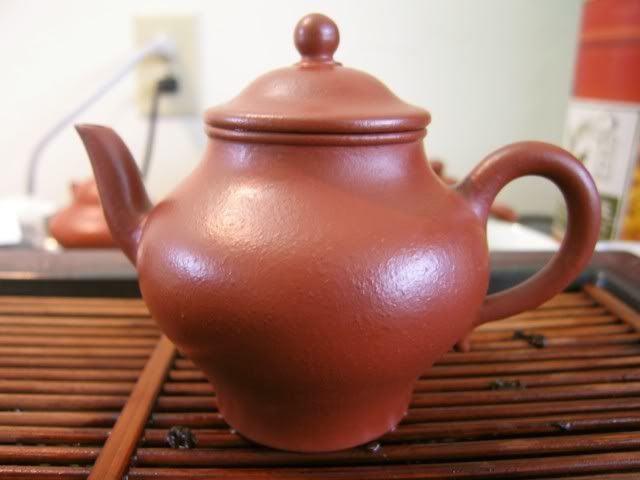
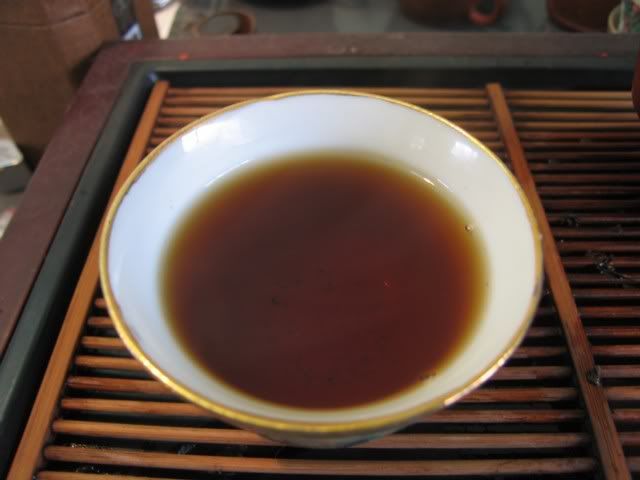
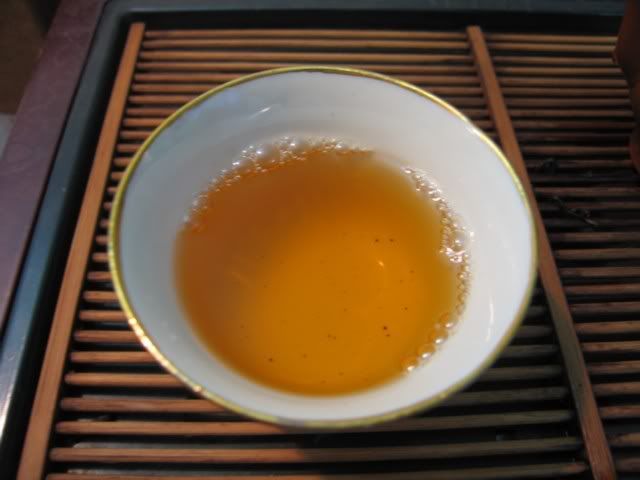
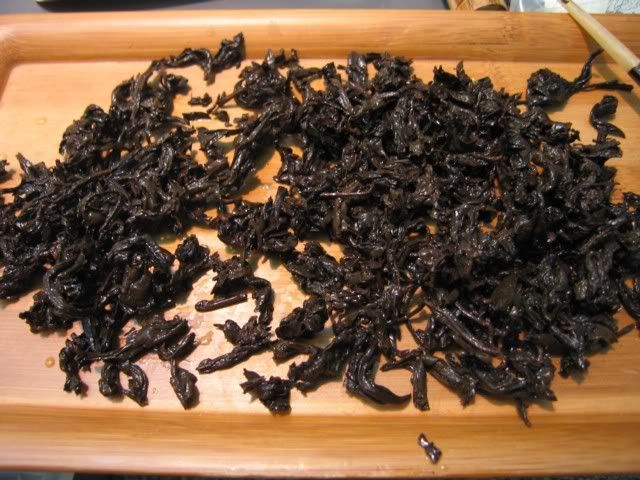
 RSS - Posts
RSS - Posts
I took you at your suggestion and have been reading some of your old post-Covid posts. I haven’t been to…